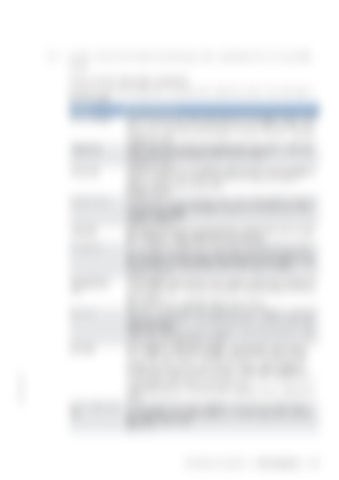6.2.2
Instructions and comments on endoscopic and visual examination of cylinder liners Terms used for endoscopic examination
TIM-ID: 0000000014 - 015
Use the terms listed below to describe the condition of the cylinder-liner surface in the endoscopic examination report. Findings
Explanations/Action
Minor dirt scores
Minor dirt scores can occur during the assembly of a new engine (honing products, particles, broken-off burrs). Removed cylinders clearly show such scoring on the running surface under endoscope magnification. Cannot be felt with the fingernail. Findings not critical.
Single scores
Clearly visible scores caused by hard particles. They usually start in the TDC area and cross through the hone pattern in the direction of stroke. Findings not critical.
Scored area
These areas consist of scores of different length and depth next to one another. In most cases, they are found at the 6-o'clock and 12-o'clock positions (inlet/ exhaust) along the transverse engine axis. Findings not critical.
Smoothened area
Smoothened areas are on the running surface but almost the whole honing pattern is still visible. Smoothened areas appear brighter and more brilliant than the surrounding running surface. Findings not critical.
Bright area
Bright areas are on the running surface and show local removal of the honing pattern. Grooves from honing process are not visible any more.
Discoloration
This is caused by oxidation (surface discoloration through oil or fuel) and temperature differences around the liner. It appears rather darker within the honed structure in contrast to the bright metallic running surface. The honing pattern is undisturbed. Discolorations extend in stroke direction and may be interrupted. Findings not critical.
Corrosion fields / spots
Corrosion fields / spots result from water (condensed water) with the valves in the overlap (open) position. They are clearly visible due to the dark color of the honing groove bottom. This corrosion is not critical unless there is corrosion pitting.
Black lines
Black lines are a step towards heat discoloration. They are visible as a clear discoloration from TDC to BDC in the running surface and the start of localized damage to the honing pattern. Cylinder liners with a large number of black lines around the running surface have limited service life and should be replaced.
Burn mark
This is caused by a malfunction in the liner / ring tribosystem. Usually they run over the whole ring-travel area (TDC/BDC), starting at the first TDC-ring and becoming more visible from the second TDC-ring 2 onwards and less pronounced from TDC-ring 1. The honing pattern is usually no longer visible and displays a clearly defined (straight) edge to the undisturbed surface. The damaged surface is usually discolored. The circumferential length varies. Liners with burn marks, or heat discoloration, starting in TDC-ring 1 have to be replaced.
Seizure marks, scuffing
Irregular circumference lengths and depths. Can be caused either by the piston skirt or the piston crown. Material deposits on the liner (smear), heavy discoloration. Severe, visible scoring. Replace liner.
MS150068/01E 2014-01 | Task Description | 167




















